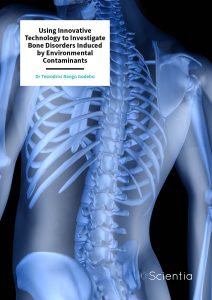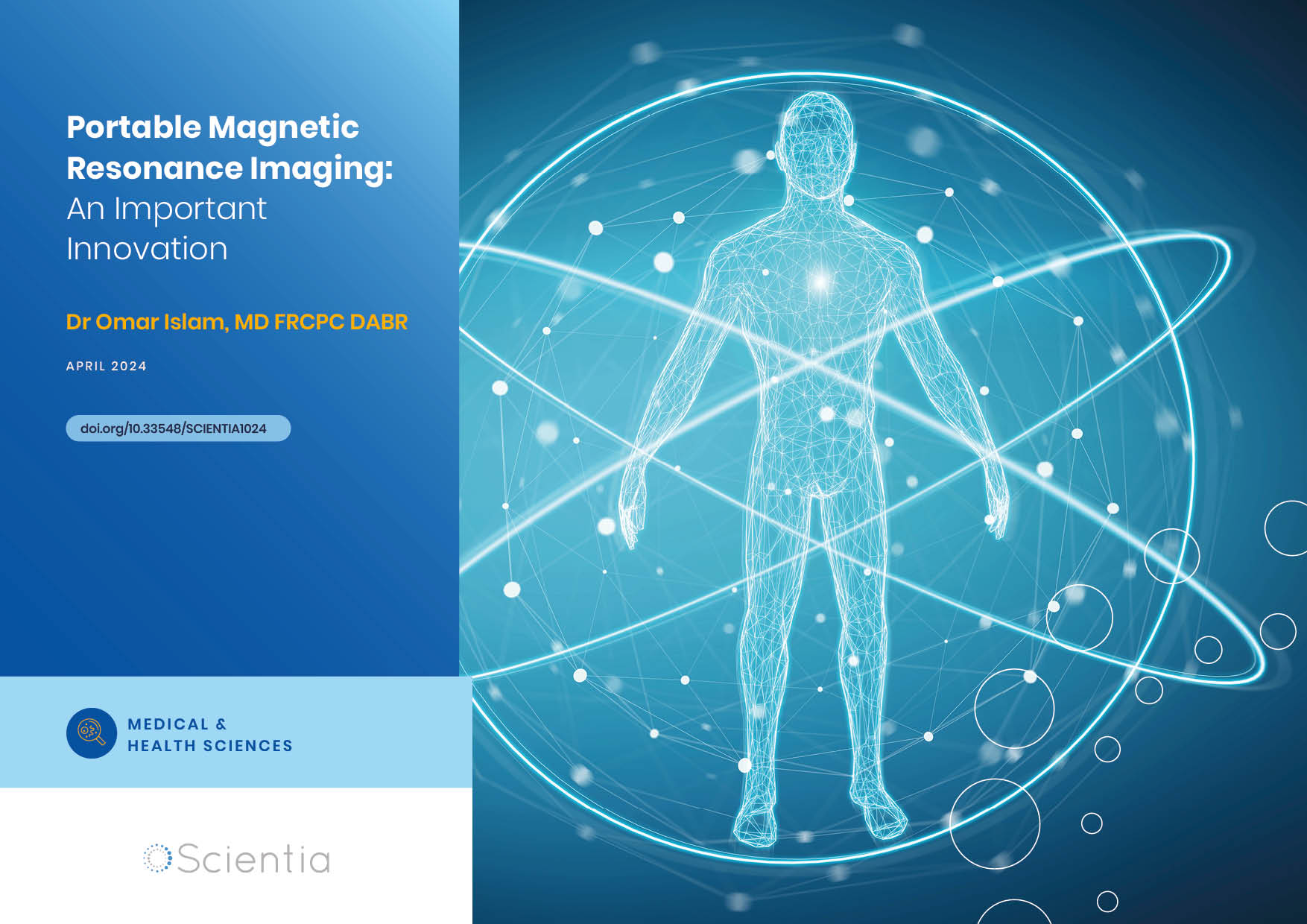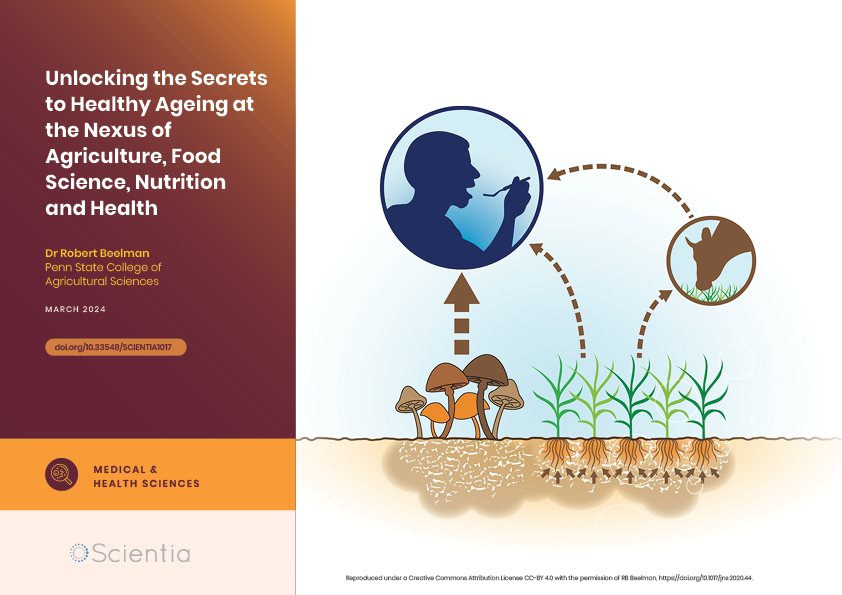Dr Tewodros Rango Godebo – Using Innovative Technology to Investigate Bone Disorders Induced by Environmental Contaminants
Throughout the world, especially in low-income countries, environmental contaminants such as fluoride have huge health consequences. While some countries add fluoride to their drinking water, others have little control over its concentration, resulting in dangerously high fluoride concentrations. Excess fluoride exposure is known to cause the bone disease skeletal fluorosis, but Dr Tewodros Rango Godebo from Tulane University in Louisiana, USA, believes that current diagnosis techniques are incomplete. Using ultrasound technology, he has determined for the first time how fluoride exposure leads to reduced bone quality, and how this diagnosis can be used in fluoride-exposed populations.
Fluoride in Our Water and Our Bodies
Our bodies are constantly exposed to mixtures of chemicals in the surrounding environment. The levels of each often depend on location and local regulations, meaning some people experience toxic levels and are consequently at high risk for health complications.
One such element that humans frequently consume is the negative ion of fluorine, called fluoride. Although it is found naturally in varying amounts, in many areas, fluoride is added to drinking water to help reduce tooth decay and improve dental health. However, an excess of fluoride consumption is linked to a variety of disorders. For example, if a child’s teeth come into contact with too much fluoride while they are still developing, a condition called dental fluorosis may occur. Individuals with mild cases experience white marks on their teeth, whilst those with severe cases have discoloured and badly pitted enamel on the teeth surface. A severe form of enamel fluorosis is shown in Figure 1. This image is of a 14-year-old boy who grew up with 13mg/L of fluoride in drinking groundwater in the Ethiopian Rift Valley and who, as a result, experienced significant loss of enamel.
The skeletal system is most at risk for adverse effects resulting from fluoride over-consumption. Fluoride becomes incorporated into bone tissue which can cause a multitude of issues, depending on how much fluoride is ingested, how long an individual is exposed for and from what age, as well as genetic factors. For example, physiological processes can be disrupted, meaning the bone tissue is not maintained and repaired properly. This leads to a much higher risk of fractures and breakages. Even neurological development and functions of the reproductive system and cardiovascular system can be altered by the presence of excess fluoride.
This surplus fluoride in the body changes both the physical and chemical properties of the bone minerals and the bone and enamel cells. If an individual is exposed for a sustained period at high fluoride levels while their bones are growing or repairing, they are highly likely to develop a disease called chronic skeletal fluorosis. This issue is one focus of Dr Tewodros Godebo’s research at Tulane University in New Orleans, Louisiana. Serving as an Assistant Professor in the School of Public Health and Tropical Medicine, Dr Godebo studies long-lasting exposure to low- and high-fluoride and subsequent chronic skeletal fluorosis using novel diagnostic methods.
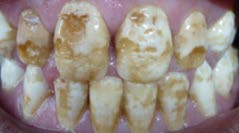
Figure 1. Enamel fluorosis in a 14-yearold boy. Credit Tewodros Godebo
Chronic Skeletal Fluorosis
This chronic disease presents various bone complications and joint, tendon and ligament calcification that progressively worsen. This deposition of calcium crystals on the tissues that connect bone to muscle (tendons) and bone to bone around the joints (ligaments) leads to chronic pain and disabling movement in the long term. The hallmark of skeletal fluorosis is osteosclerosis – the thickening of tissue resulting in an abnormally thick bone. The disease also results in damage called bone lesions and osteoporosis which is the weakening of the bones.
Skeletal fluorosis also impacts the large, tightly bound molecules that help keep the bone tissue together, known as matrix proteins. Collagen is an example of one of these proteins, and when altered due to disease, the elasticity and biomechanical integrity of the bone is damaged. This means that people suffering from skeletal fluorosis have a very high tendency to suffer from fractures and breaks, which can be exacerbated by the effect of fluoride on the function of the parathyroid glands. This results in hyperparathyroidism, which means that the hormones that normally regulate the calcium concentration in the body are imbalanced. The consequent depletion of calcium in the bones further diminishes their flexibility and thus increases susceptibility to fractures.
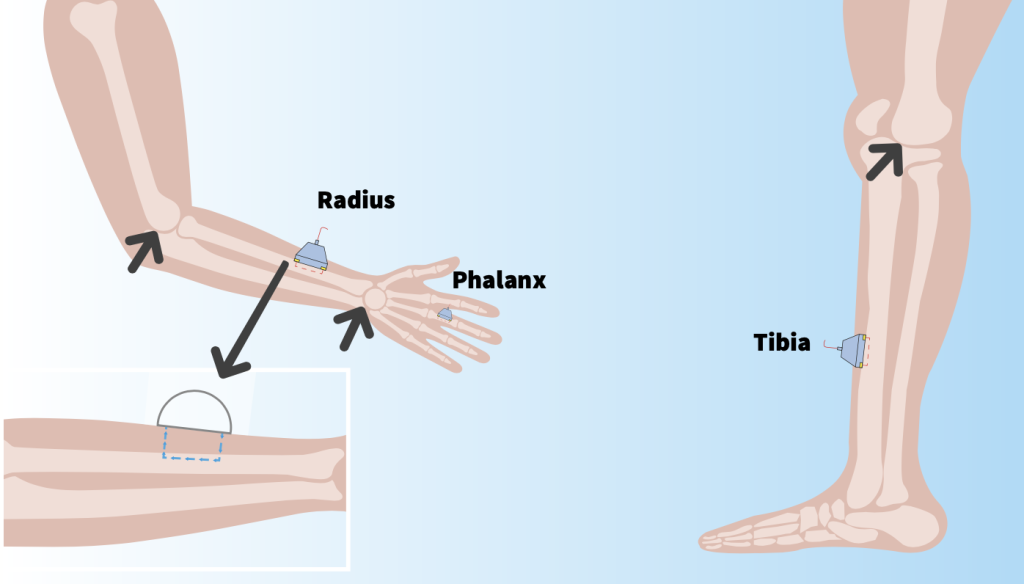
The physical structure of bone tissue is complex as it includes an intricate network of mineralised fibrils, cells, proteins and water. The different bone parameters, from its density and collagen composition to the microstructures inside, all influence how resistant a bone is to fracture. These components come together to determine the mechanical properties of bone.
Therefore, even though it is well-understood how fluoride impacts bone forming and resorbing cells, it is unclear how it affects bone quality in humans. A skeletal fluorosis diagnosis still depends on using X-ray imaging to determine bone density. However, this method of testing does not account for alterations to the microstructures, collagen composition and elasticity due to fluoride exposure. This is where Dr Godebo is making strides in his field by investigating how innovative technology can be used to improve the diagnosis of chronic skeletal fluorosis.

Mean community-level SOS among adults and fluoride concentrations in drinking water from the sample communities in the Ethiopian Rift Valley. Reproduced from TG Rango, et al., Bone quality in fluorideexposed populations: A novel application of the ultrasonic method, Bone Reports, 2020, 12, 100235, under Creative Commons CC-BY-NC-ND license. Credit: Tewodros Godebo
An Ethiopian Population with High Exposure to Fluoride
In an important study, Dr Godebo and his colleagues analysed data from a population of 341 participants, aged 10–70 years old, living in the rural location of the Rift Valley in Ethiopia. Around 14 million of those living in Ethiopia are thought to be at high risk of dangerous levels of fluoride exposure. However, the Rift Valley region experiences an unusually high exposure to natural fluoride from the groundwater wells for which they depend on their drinking and cooking water.
A wide range of fluoride concentrations in the drinking water was found, spanning from 0.3 mg/L to 15.5 mg/L. To put this into context, the typical low level of fluoride in most high-income countries (including where it is added to prevent tooth decay) is 0.7 mg/L and the World Health Organization recommends that drinking water should not contain a fluoride concentration any higher than 1.5 mg/L. This means that shockingly, some people were ingesting ten times the recommended amount of fluoride. This was represented in urine samples from the participants which showed an unusually high concentration (up to 39.5 mg/L) of fluoride, suggesting a significant amount of fluoride is also retained in the bone.
The team used a non-invasive, portable ultrasound method to measure the bone density of the population in the first study of its kind. All the previously mentioned parameters of the bone quality (density, collagen and microstructure) affect the speed of sound (SOS) measurement. Because there was previously no existing research on using ultrasound and SOS to measure the bone quality in groups with varying levels of exposure to fluoride, Dr Godebo aimed to investigate how useful and applicable it could be in real-world situations.
Before beginning the experiment, Dr Godebo hypothesised that SOS would increase as bone density increased due to fluoride exposure. This is because the X-ray diagnosis technique that is used in countries where skeletal fluorosis is common tends to detect increased bone density (osteosclerosis) in these patients.
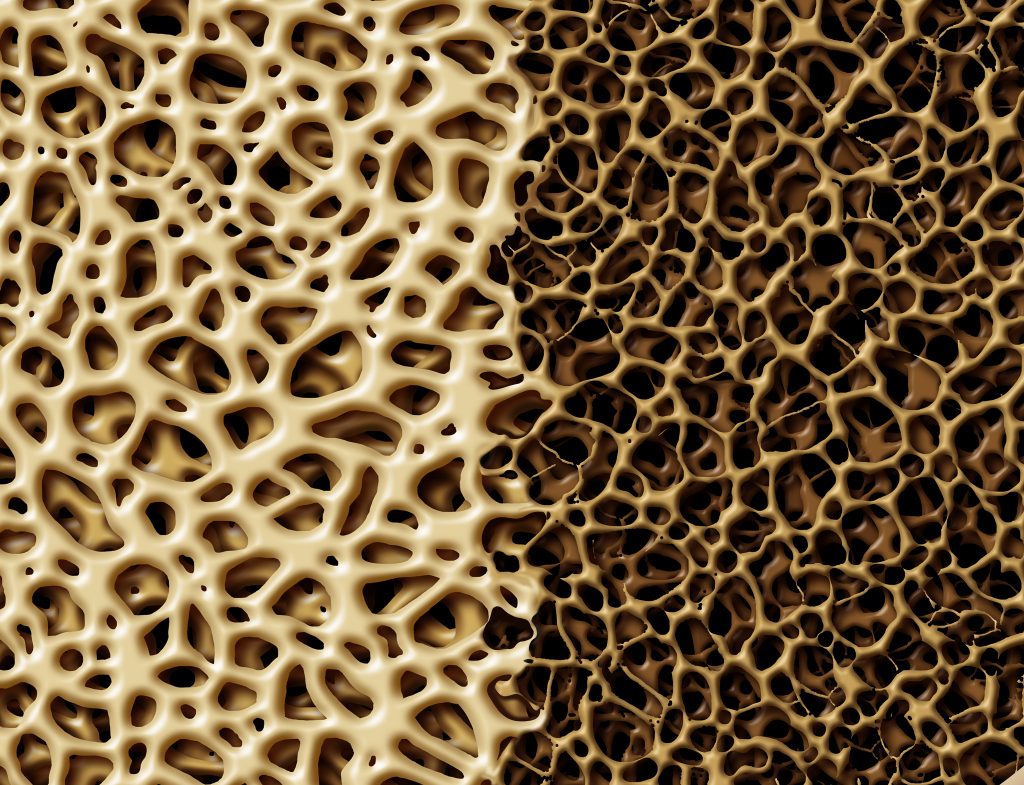
Bone with osteoperosis
An Unexpected Finding
Dr Godebo measured the SOS in a type of bone tissue called cortical bone, which is a protective, dense outer surface layer of tissue that surrounds the internal cavity. It comprises nearly 80% of the skeleton and is dense and solid, making it a good target for measuring bone quality and strength. They tested the tibia in the lower leg, the radius in the forearm and phalanx in the fingers (see illustration above titled ‘Bone with osteoperosis’.
Intriguingly, Dr Godebo discovered that his initial hypothesis was incorrect and that higher fluoride exposure in fact decreased SOS measurements in all three of the cortical bone sites. This suggests that because ultrasound measurements are able to measure and characterise the overall quality and inner properties of the bone, these decreased measurements actually indicate the deterioration of the bone. According to Dr Godebo, this reveals that the physical effects of excessive fluoride exposure are complex and diverse, as is bone quality.
Most importantly, it was found that individuals sourcing their drinking water from community wells with elevated levels of fluoride had significantly lower bone quality compared to those from communities with low fluoride levels. Dr Godebo’s work has shown that this fluoride-induced bone deterioration can be confirmed and quantified in rural settings, outside of medical establishments. X-ray techniques are relatively expensive, they expose patients to potentially dangerous radiation, and are difficult or even impossible to use in remote settings. In comparison, Dr Godebo’s ultrasound method is portable, low-cost and effective. As such, the method would be useful for a widespread assessment of how fluoride and other environmental contaminants may harm bone health at the population level. However, it will be important to test the feasibility of this as a diagnostic method through additional research in clinical settings and other locations.
Dr Godebo’s research is a vital component of understanding how fluoride impacts the health and lives of people who have little control over their water source and how this might be investigated in the future. Furthermore, this work and methods have the potential to be applied to other environmental contaminants as well as other induced bone disorders.
SHARE
DOWNLOAD E-BOOK
REFERENCE
https://doi.org/10.33548/SCIENTIA794
MEET THE RESEARCHER

Dr Tewodros Rango Godebo
School of Public Health and Tropical Medicine
Tulane University
New Orleans, LA
USA
Dr Tewodros Rango Godebo is an Assistant Professor at the Department of Environmental Health Sciences, School of Public Health and Tropical Medicine. He received his PhD in Environmental Geochemistry from Ferrara University, Italy. Prior to joining Tulane, he was a postdoctoral fellow in the Nicholas School of the Environment, Duke University. His research interests lie in identifying the origins and mechanisms of water-soil-food contamination, as well as utilising and developing elemental biomarkers to understand the links between exposure to contaminants and human health.
EXPERTISE
Environmental Geochemistry, Water and Food Quality, Biomarkers and Health
CONTACT
W: https://sph.tulane.edu/ehs/tewodros-godebo
KEY COLLABORATORS
Biniyam A Ayele, Assistant Professor, Department of Neurology, Addis Ababa University, Ethiopia
Marc Jeuland, Associate Professor, Sanford School of Public Policy and the Duke Global Health Institute, Duke University, USA
Redda Tekle-Haimanot, Professor Emeritus, Department of Neurology, Addis Ababa University, Ethiopia
Gary M. Whitfield, Professor, Department of Oral Biology and Diagnostic Sciences, Augusta University, USA
FUNDING
US National Institutes of Health
FURTHER READING
TG Rango, MA Jeuland, R Tekle-Haimanot, et al., Bone quality in fluoride-exposed populations: A novel application of the ultrasonic method, Bone Reports, 2020, 12, 100235.
TG Rango, CJ Paul, MA Jeuland, R Tekle-Haimanot, Biomonitoring of metals and trace elements in urine of central Ethiopian populations, International Journal of Hygiene and Environmental Health, 2019, 222(3), 410–418.
TG Rango, A Vengosh, MA Jeuland, et al., Biomarkers of chronic fluoride exposure in groundwater in a highly exposed population, Science of the Total Environment, 2017, 596, 1–11.

REPUBLISH OUR ARTICLES
We encourage all formats of sharing and republishing of our articles. Whether you want to host on your website, publication or blog, we welcome this. Find out more
Creative Commons Licence (CC BY 4.0)
This work is licensed under a Creative Commons Attribution 4.0 International License. 
What does this mean?
Share: You can copy and redistribute the material in any medium or format
Adapt: You can change, and build upon the material for any purpose, even commercially.
Credit: You must give appropriate credit, provide a link to the license, and indicate if changes were made.
SUBSCRIBE NOW
Follow Us
MORE ARTICLES YOU MAY LIKE
Dr Yong Teng | Improving the Outlook for Head and Neck Cancer Patients
Dr Yong Teng at the Emory University School of Medicine is working with colleagues to overcome the high mortality of individuals diagnosed with cancers affecting the head and neck. One of his approaches is based on understanding the particular mechanisms of the ATAD3A gene, which new insights suggest are closely related to cancers affecting the head and neck.
Professor Toni Miles | Why Understanding Bereavement Matters
Professor Toni Miles has dedicated her research efforts to measuring bereavement and its impact on population health. Individual experience with bereavement is commonplace, but we know little about its impact on society when there is an instantaneous experience by a large number of individuals, i.e., mass bereavement. To measure its occurrence, her research with colleagues first confirmed that bereavement can be effectively measured in population surveys. Professor Miles argues that we should use such approaches to deliver interventions aiming to reduce the negative consequences of bereavement on individuals. By measuring bereavement in communities, these data become a cost-effective way to increase resilience, reduce demands on healthcare systems, and enhance public safety.
Dr Omar Islam | Portable Magnetic Resonance Imaging: An Important Innovation
Imaging technologies are vital in modern medicine and have revolutionised how clinicians make diagnoses and monitor disease progression. However, the necessary equipment – such as a scanner for magnetic resonance imaging (MRI) – is very large and expensive, requiring patients to go to the scanner rather than receiving scans as bedside care. This takes up valuable staff time and resources, and can present further risks to patients. Dr Omar Islam from Queen’s University and Drs Aditya Bharatha and Amy Lin from the University of Toronto are showing how portable MRI scanners may offer a viable alternative that benefits patients and healthcare systems.
Dr Robert Beelman | Unlocking the Secrets to Healthy Ageing at the Nexus of Agriculture, Food Science, Nutrition and Health
Dr Robert Beelman is Professor Emeritus of Food Science and the Director of the Center for Plant and Mushroom Foods for Health at Penn State College of Agricultural Sciences. His groundbreaking research on the medicinal properties of mushrooms and vital nutrients like Ergothioneine has opened new pathways in understanding the link between diet, soil health, and human longevity.

